- Home
- News
- General News
- Mr Dmitry Livanov,...
Mr Dmitry Livanov, Minister of Education and Science of the Russian Federation, visits the ESRF
29-06-2016
On 28th June, the European Synchrotron welcomed Mr Dmitry LIVANOV, Minister of Education and Science of the Russian Federation, on the occasion of the 65th ESRF international Council meeting.
During this visit, Mr Dmitry Livanov, with Francesco Sette, Director General of the ESRF, and Bertrand Girard, Chairman of the Council of the ESRF, inaugurated the Joint Grant Programme of the Ministry of Education and Science of the Russian Federation and the ESRF, in the presence of the ESRF Council delegates, Russian users and ESRF scientists, post-docs and PhD students.
It was the first ministerial visit since the accession of the Russian Federation as an ESRF member country, and it was highly significant in the context of the 50-year anniversary of cooperation of Russia and France in science and technology.
This inauguration represented a new step in the long-standing scientific collaboration between the ESRF and the Russian Federation, dating back more than 20 years.
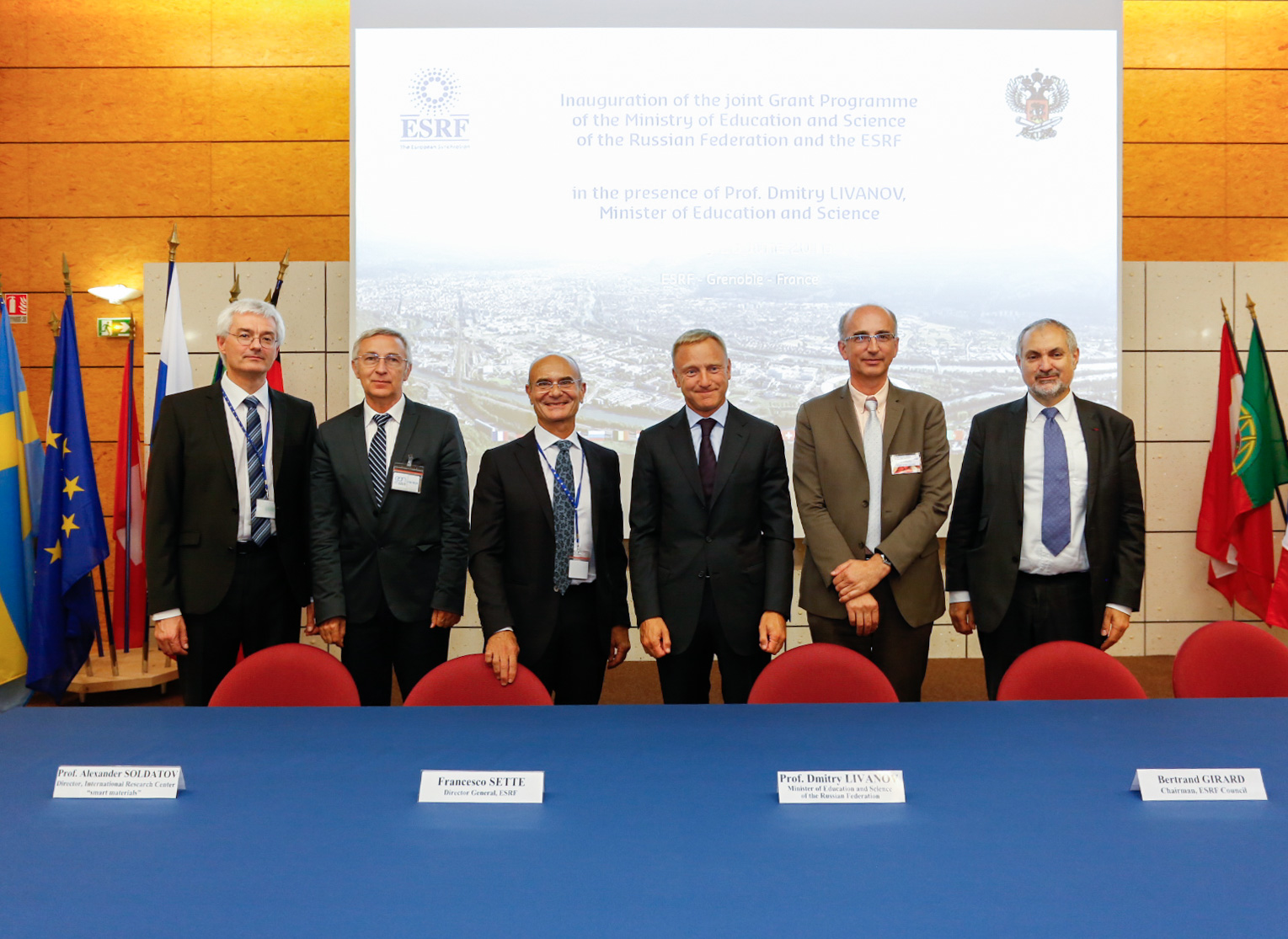 |
|
Inauguration ceremony with Harald Reichert, Director of Research at ESRF, Alexander Soldatov, Director of the International Research Center, Smart Materials, Francesco Sette, Director General of the ESRF, Dmitry Livanov, Minister of Education and Science of the Russian Federation, Bertrand Girard, Chairman of the council of the ESRF and Paul Indelicato, representative of the French Ministry of State for Research. |
The collaboration between scientists working at the ESRF has always benefited from the presence of Russian scientists. Collaboration activities have been steadily growing, in particular since 2011, through concrete actions to further strengthen the Russian community using the ESRF.
In 2011, a Memorandum Of Understanding was established with the NRC-KI (Kurchatov Institute). The cooperation was strengthened further with the accession of the Russian Federation as an ESRF member in December 2013. In 2014 an ESRF-Russia cooperation platform was created to promote scientific and technical exchanges, and scientists mobility, among research on innovative materials and living matter.
"Our task is to provide an opportunity for scientists to work with first-class experimental facilities, and therefore Russia is involved in a number of international projects. The ESRF is one example of such collaboration. Our scientists are increasingly interested in the work done at the European Synchrotron: more and more applications for experiments are made every year, with an increasing level of quality. It is clear that unique results can only be achieved by using unique scientific equipment. The share of Russian participation in the work of this centre - in the range of 5.5% to 6% - should not be seen as a limit, and will increase in the future", underlined Dimitry Livanov during the meeting.
Today, the ESRF has developed around 60 partnerships with Russian Institutes and Universities.
The inauguration of this Joint Grant Programme sets up the basis to further promote joint scientific and technological endeavours to the benefit of all parties, through the ESRF peer review process.
As explained by Francesco Sette: "It is wonderful to witness how many Russian groups are developing science and technology programmes with ESRF scientists and with ESRF users from the other 20 ESRF member and scientific associate countries. This is a wonderful trend that highlights how science at research infrastructures such as the ESRF serves many purposes which include giving the possibility to investigate and discover the materials of the future and the mechanisms giving rise to biological life. It symbolises the success of the ESRF, that allows scientists from different cultures to meet and collaborate across the borders, to push back the frontiers of knowledge, to develop new technology to the benefit of partner states industry and society and to forge the next generation of European and international scientists and engineers. This visit sets the basis for many new exciting opportunities for the future in science and international cooperation".
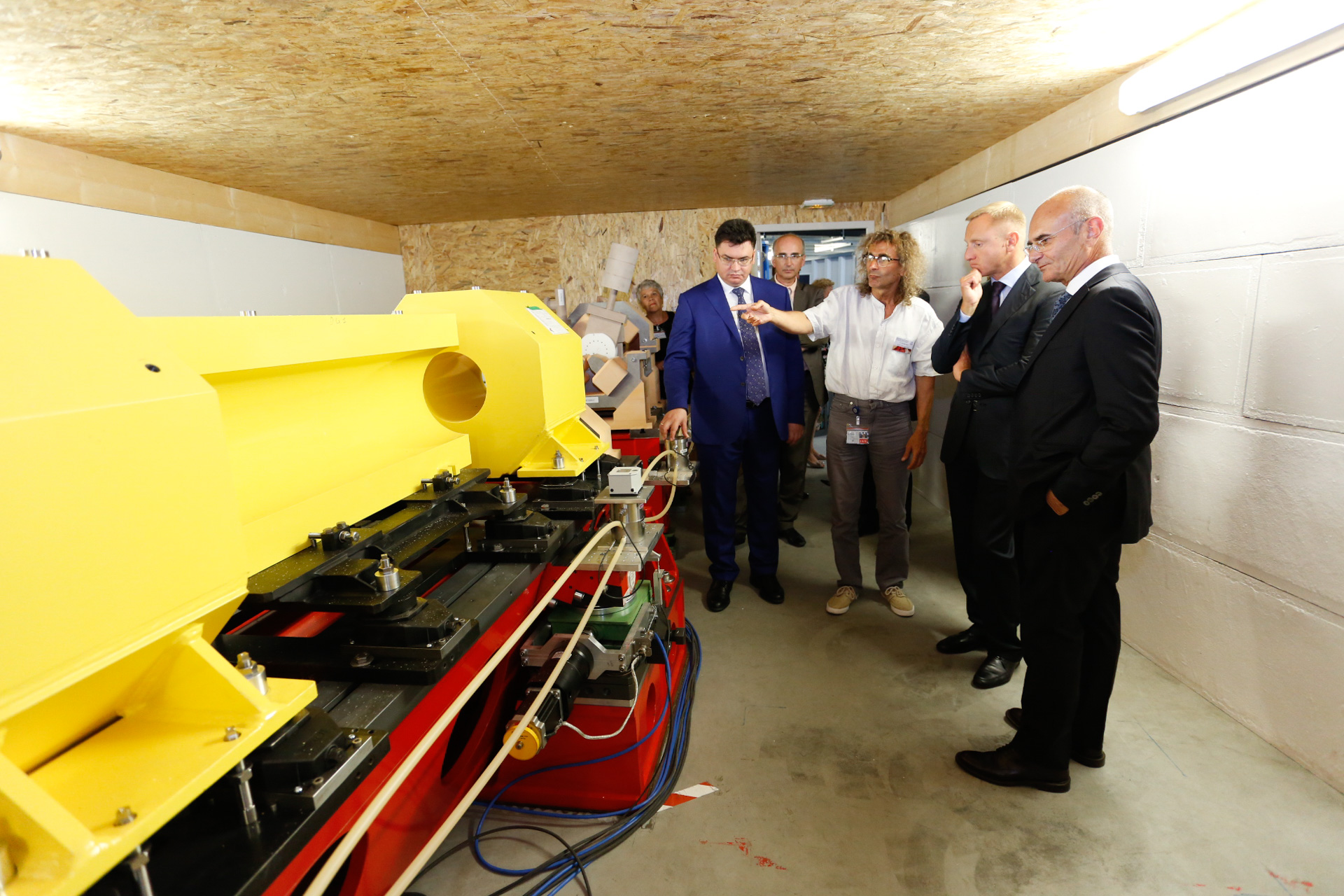 |
|
Accelerator division director Pantaleo Raimondi shows Mr Livanov the new prototypes of girders for the EBS project. |
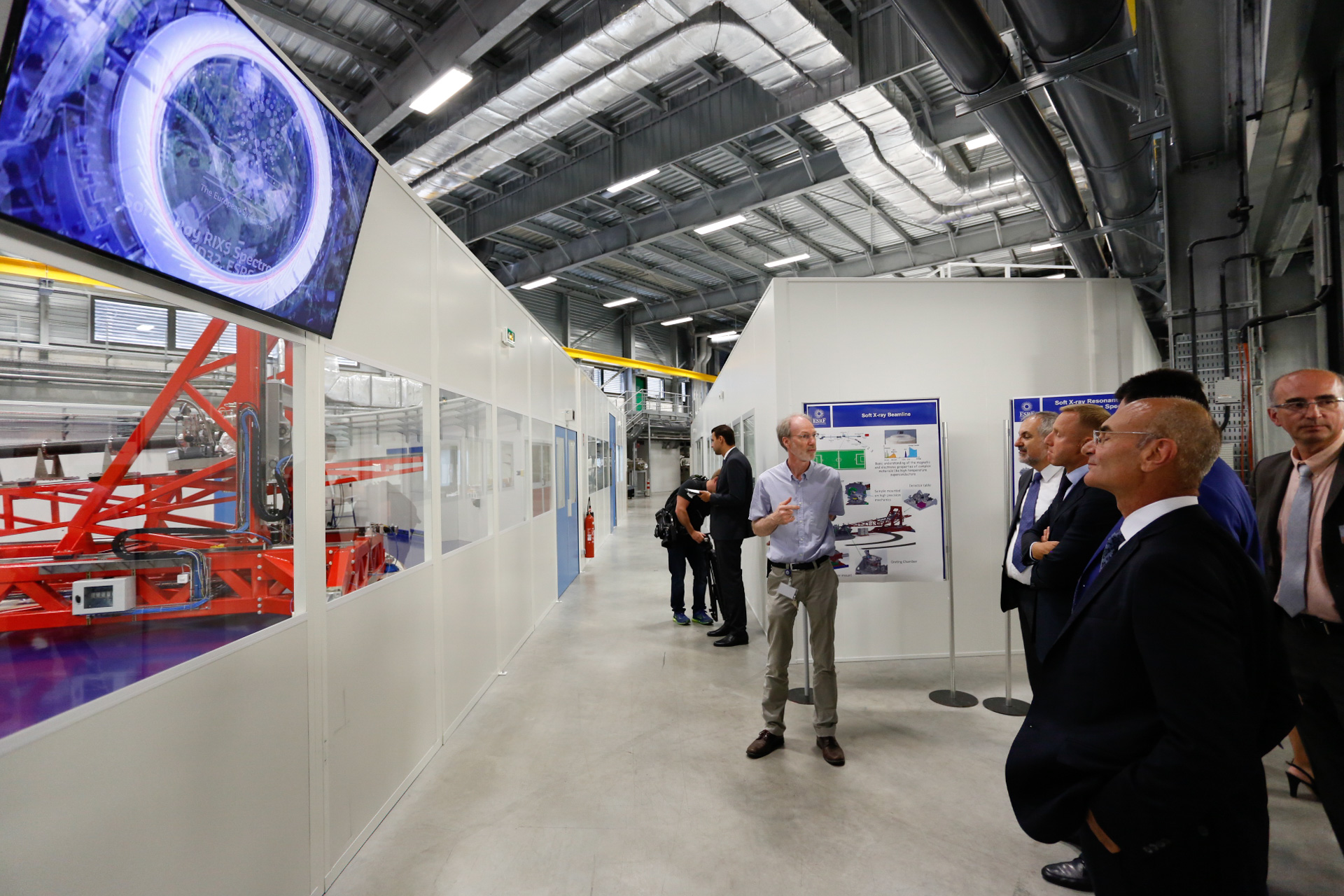 |
|
Visit of ID32 with Nick Brookes, scientist in charge of the beamline. |
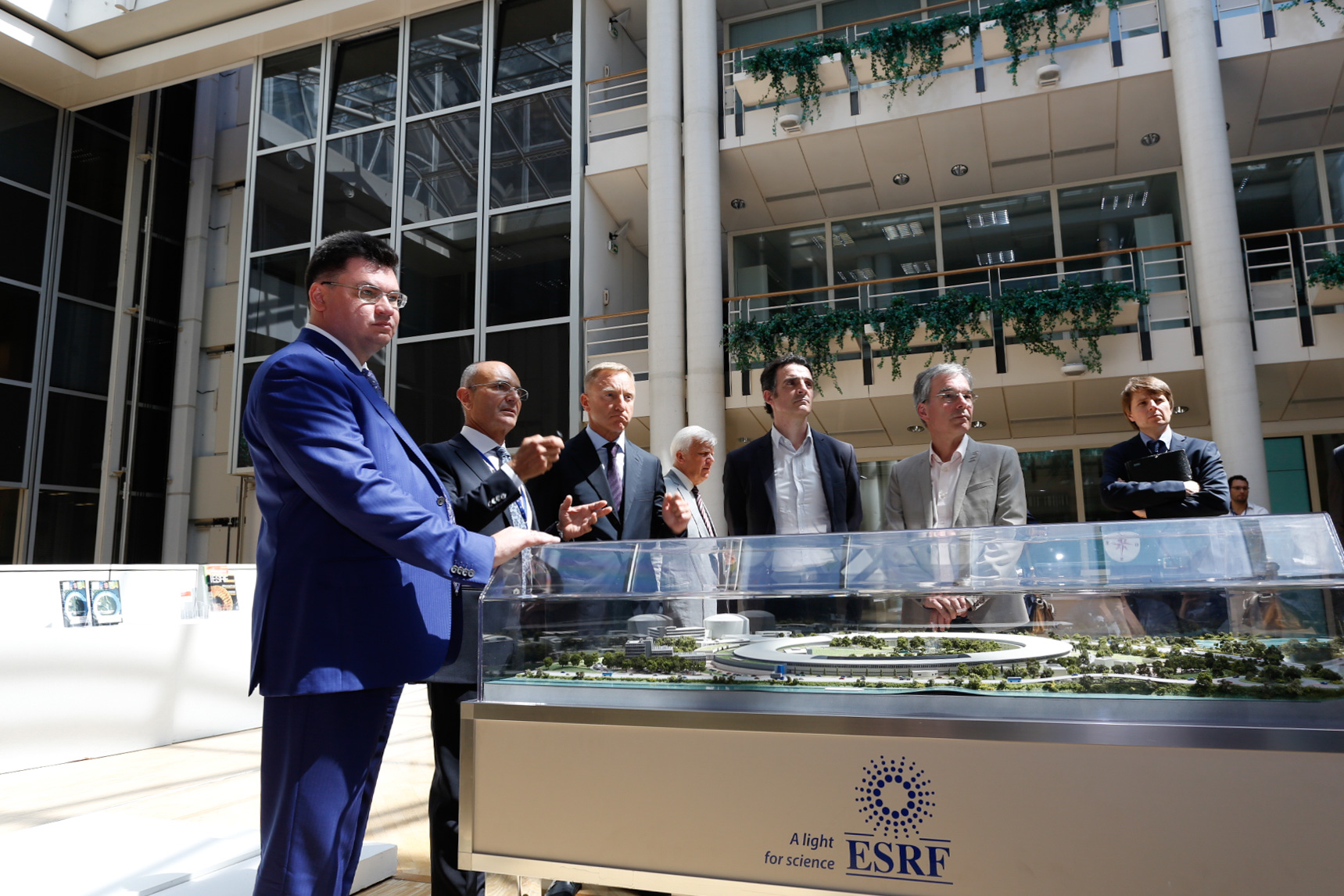 |
|
Presentation of the ESRF by Francesco Sette in the presence of the local authorities. |
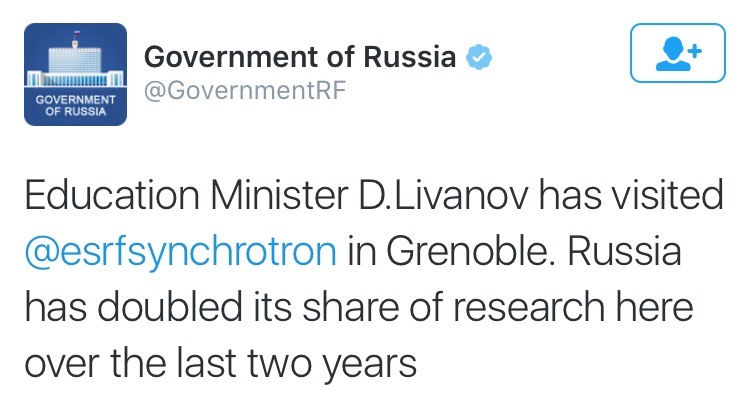
Top image: Christoph Müller-Dieckmann explains the functioning of the macromolecular crystallography beamline ID30B to Mr Livanov.



